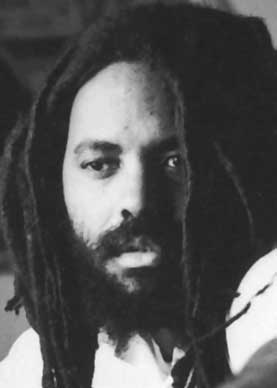![]()
Write us!
socialistviewpoint@pacbell.net
To Be Young, Gifted And…Simone!
By Mumia Abu-Jamal
Our sweetest songs are those that tell of saddest thought.
—Percy Bysshe Shelley (1792-1822),
“To a Skylark”
 When the historical record of the Twentieth Century is finally written, a special chapter will have to be penned about the remarkable and talented singer, who was called Nina Simone (1933-2003).
When the historical record of the Twentieth Century is finally written, a special chapter will have to be penned about the remarkable and talented singer, who was called Nina Simone (1933-2003).
In any true history, words, no matter how skillfully crafted, or masterfully molded, will fail to capture the brilliance of the woman. Some recording must be appendixed, so that the student will be blessed to hear her thrilling contralto, dark, full, rich as earth in the promise of spring.
Also required, will be a collection of her lyrics, so that no one may miss the words that she dared set to music and bring to life, with a fury, a passion, and sheer artistic courage that continue to dazzle years, decades even, after their creation.
She was an Artist (with a capital “A”) in every sense of the word, but she was far more than that term now suggests. She was proud, imperial, majestic and deliciously arrogant as, say, the late jazz great Miles Davis was, in his prime.
The writer remembers her appearing in the late 1970s, in an outdoor, mid-day concert at the Bell Tower at Temple University. She looked out at the crowd with nervous irritation, not fear driven by the uncertainty of her performance, but a barely suppressed anger that there were only hundreds of people gathered to hear her, not thousands.
She sang songs with bite, and grit, and pride and longing . . . and rage. Deep, down, boneset rage, at how cheaply life was lived for Africans in America. Her “Mississippi Goddamn” was an anthem that stirred, not merely the Civil Rights Movement, but also the Black Liberation Movement: “You don’t have to live next to me, just give me my equality!,” she demanded. Her songs could also be tender, loving odes to the multi-flavored beauty and spirits of Black women, as in her signature “Four Women,” which spoke of the various moods and hues of her sisters.
Decades before Erykah Badu would wear the head wrap, Simone did so, and walked as regally as the Nubian princess that she became.
Although she was born in the Jim Crow South, the apartheid way of quiet acceptance was never hers, and she spoke out boldly, in her art, and in her interviews, against the injustices suffered by her people.
When the Nixon-era began, she bid her homeland adieu, and like a generation of other brilliant Black Americans (like the writer, Richard Wright) who could not abide the nastiness, meanness, and racial indignities of the time, she migrated to live with dignity in France.
Some reviewers have pronounced her career essentially over when she left the U.S. during the ’70s, never to rise again.
But great artists, like great music, have a habit of resurrection. In the early ’90s, an American film emerged that was a borrowing from the French. Bridget Fonda portrayed an alienated, drug-addicted, youngster who got caught up in a failed drugstore robbery, turned killing. She was spirited into a shadowy spy agency where she worked for the government. The character, when she was alone, invariably played Nina Simone records in the background to reflect her moodiness. The film was titled “Point of No Return” (a U.S. remake of “La Femme Nikita”). A generation of young filmgoers were thus exposed to the wonder and power of Simone’s magnificent instrument.
Where are the Simones of this generation? They are there—in the shadows, perhaps; but they are there.
They are perhaps afraid of giving as much as their recently departed ancestor. For, even they know that she sacrificed a good deal to sing the songs that moved her great heart. Such a prospect is no doubt scary.
Yet, one wonders, who among the madding throng will be remembered, not to mention revered, 30 years from now? How much of what is produced now furrows its way into the heart, or rings the deep bell of recognition in the soul? Who will sing of the wonder, the terror, the beauty, and the madness of Black life in this new century?
—Copyright 2003 Mumia Abu-Jamal
Write us
socialistviewpoint@pacbell.net